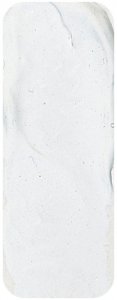Description
"Paradoxically there are several quinacridone reds in the Matisse range and their pigment is pigment violet19 while this one, which is a true magenta violet is made from pigment red 122. It is not due to some kind of magic on the part of the paint chemists at Matisse but entirely due to the fundamental chemistry of the pigment itself. When the pigment was first synthesised back in 1958 the basic form of the molecule was a disappointment. This was what is referred to as the alpha form and it proved to be unstable and therefore useless. Fortunately the chemists did not give up and the subsequent beta and gamma forms were not only a beautiful violet and red respectively, but they proved highly resistant to light, weathering, and chemicals. They were quickly registered as their respective pigment violet 19 and pigment red 122 varieties. As time passed chemists discovered how to vary the manufacturing process so that both pigments could be produced in up to 7 different crystalline structures and since the crystal structure changed the hue it wasn???t long before quinacridones of both red, rose, and violet were being produced from the originals. Today the quinacridone family has grown to include gold and dark orange variants and the pigment designations include PO48, PO49, and PR206, and PR209. This Matisse Magenta Quin Violet represents one of the first quinacridone colours brought to market in 1958 and was available in some of the first acrylic paints available.
When acrylics were first marketed in 1956 they were seen not just as a new medium but as an experimental medium at the cutting edge of technology and art and were used by some of the most experimental modernists such as Jackson Pollock. These artists were looking for new modes of expression and along with it new colours and so the acrylic manufacturers had a customer base that was open to trying new things. That is why new artist colours tend to be trialled first in acrylics before making it into the more traditional media. This demand for the new by the artist user base also had a reverse effect. The new colours would often be the reason that an artist might be attracted to the acrylics and try them out. Magenta Quin Violet was one of those colours. When quinacridone pigments were relatively new there was nothing quite like this colour available to the artist. There were some colours that looked similar on the market but they were very fugitive and so not possible for use for any artwork intended to last more than a few months. Magenta Quin Violet was a revelation. The colour was highly permanent and gave colour mixing possibilities that just couldn???t be done before. It mixes beautifully with blues to make bright violets and purples and enables the painting of the extraordinary colours found in some birds feathers and butterflies. A useful tip is to mix it with either Iridescent White or with Matisse Iridescent Medium MM24. When mixing with the medium it pays to experiment with a colour to paint it over. In other words paint the area with a straight colour. Often black can be a very effective choice. Then paint the Magenta Quin Violet and Iridescent Medium mix over that. It gives a shimmery look that is very effective. Magenta Quin Violet is also very useful in a more conventional way. Mixed with earth colours it gives warm transparent undertones that gives a lift to otherwise dull passages. Its transparence lends the colour to glazing techniques and with small adjustments with other colours it can recreate the beauty of the colours of textiles, toys, cars, wall colours, and all the other myriad man made objects in the world that are colours never before seen in nature but which become objects we want to include in paintings.
"









